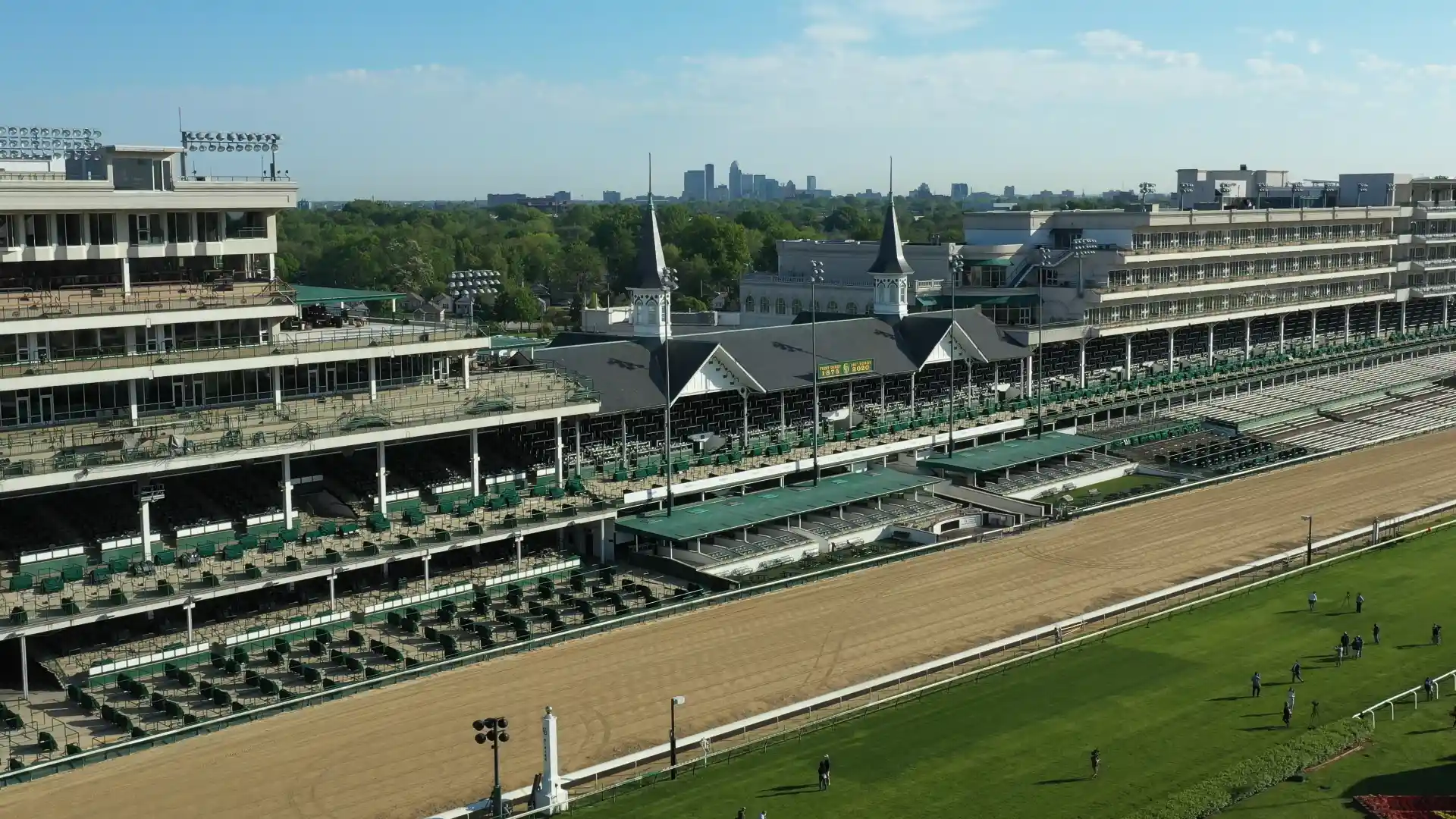
The Spires At Churchill Downs
TLDR
In 2017, I was hired by NBC Sports to create timelapses for their broadcast of the Kentucky Derby. Despite being an expert in creating timelapses, I had never worked on a project of this scale before. The job required me to set up multiple cameras at various locations around the racetrack, capture footage, and process the images into 10-second video clips. I faced some challenges along the way, including a faulty camera and a producer who was unhappy with the lack of motion blur in some of the clips. However, I adapted to the situation and managed to deliver the required content before the broadcast.
Although the job was demanding and stressful at times, I found it to be a rewarding experience. I had the opportunity to capture unique footage, such as private planes arriving at the Louisville airport, and one of my shots was used during the opening of the broadcast. The pay was also substantial, providing me with enough money to cover my expenses for the next couple of months. Additionally, the food provided by NBC was excellent, which helped boost morale among the crew. Looking back, I’m grateful for the experience and the value it provided me, both personally and professionally.
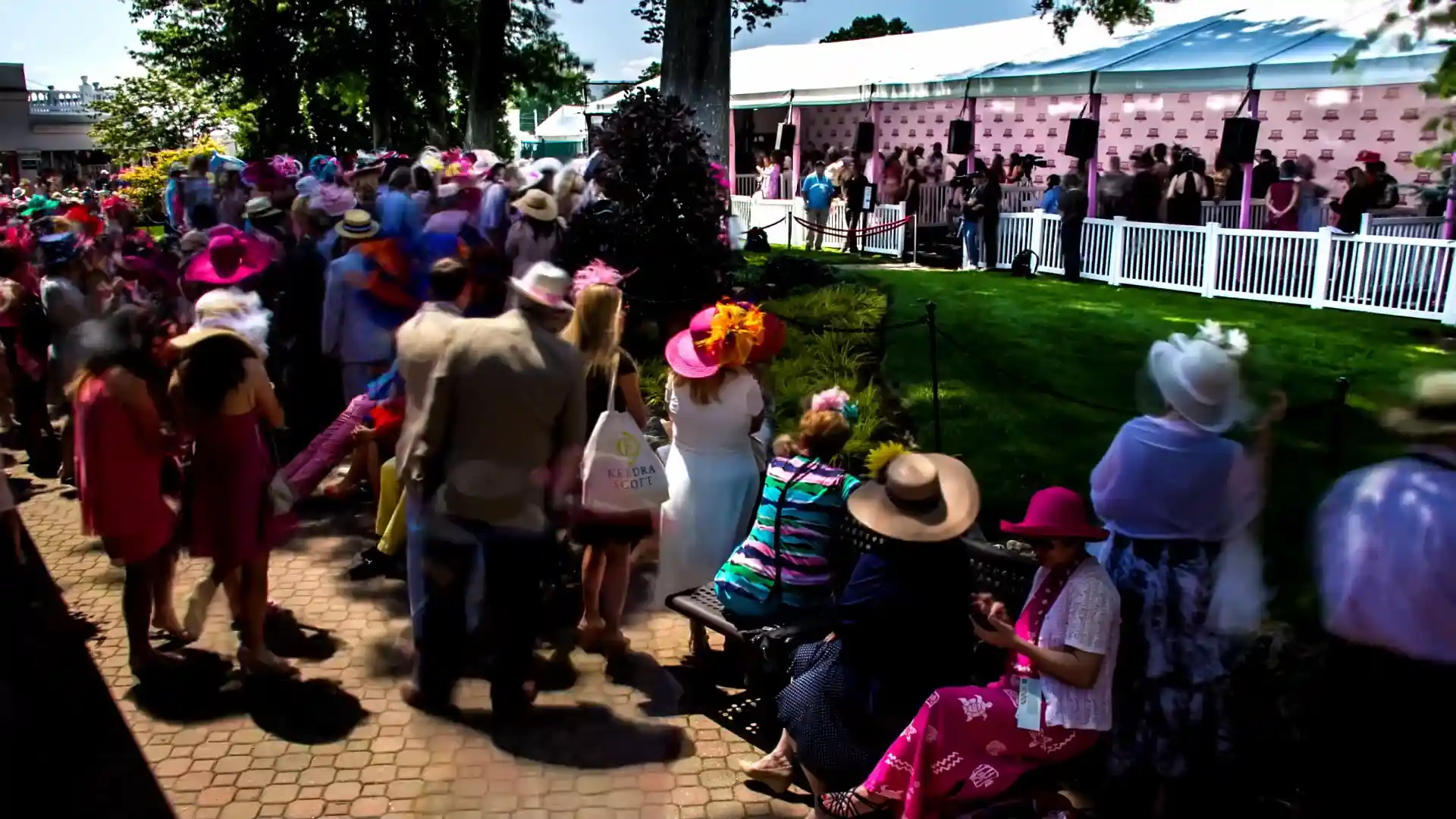
Creating Timelapses For NBC Sports At The Kentucky Derby
As a freelance photographer, I never expected to receive a call from NBC Sports asking me to create timelapses for their broadcast of the Kentucky Derby. It had only been four months since I had parted with my previous job and ventured out on my own. This opportunity felt like a dream come true. I spoke with the regular timelapse creator for NBC Sports, who was unable to make it due to scheduling conflicts. We discussed the technical aspects of the project, such as the frequency of photos, the final video frame rate, and the duration of each clip series and to my delight, he mentioned that my estimate of around $8000 was in line with their expectations.
Excited about the opportunity, I dove headfirst into the project. NBC Sports wanted two to three cameras capturing various locations continuously. As each camera finished capturing a scene, I would retrieve the memory card, move the camera to a new location, start recording the next scene, and then return to the post-production truck to process the raw photos into 10-second video clips. Processing raw photos is a resource-intensive task that requires specialized software and ample hard drive space. I estimated that fewer than 10,000 computers worldwide were equipped for this type of work, so I explained to the producer that my computer would be needed and received permission to rent out my desktop for the job.
With the processing logistics taken care of, I turned my attention to the photography side of the project. I ensured that my two cameras were up to the task at hand and purchased a third used camera from Amazon that would capture raw photos at a reduced resolution to speed up the rendering process. However, when the new camera arrived, I encountered a memory card write error. I tried multiple memory cards, but the issue persisted, indicating that the camera was defective. With only three days until the event, I had to quickly order another camera and initiate the return process for the faulty one. Thankfully, the replacement camera arrived and worked flawlessly.
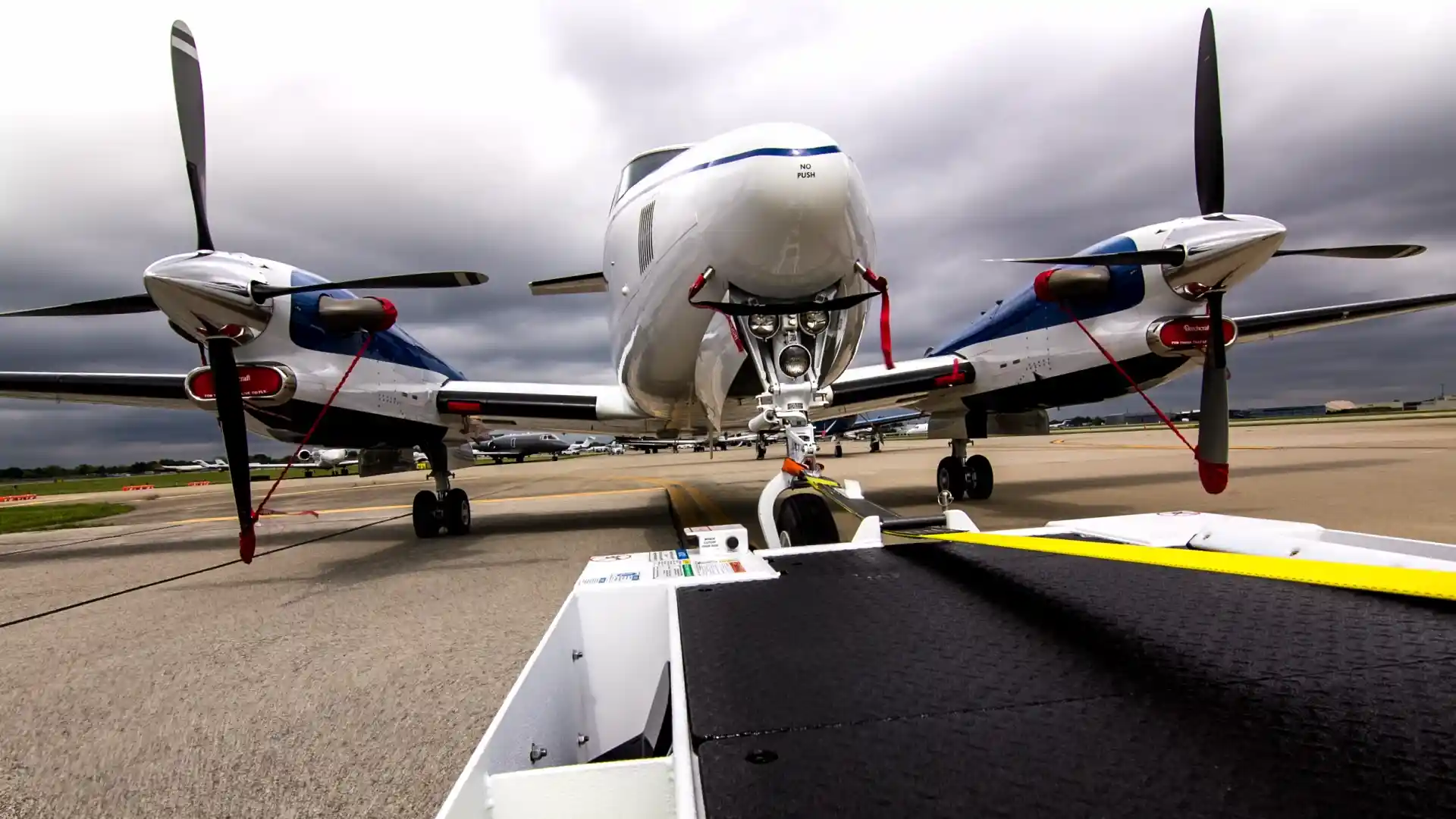
Recording At The Louisville Airport
A couple of days before the race, my first recording location was the Louisville Kentucky airport. Although not typically a busy airport, the Derby attracts hundreds of private planes from across the US and around the world, bringing in wealthy individuals to watch the races and network with other elites. As an airplane enthusiast, I was thrilled to be granted access to the tarmac, where I attached an articulating arm to an airport tug and captured thousands of photos of planes being maneuvered. It was one of the coolest things I had ever recorded. However, upon reviewing the footage, I noticed that the tug driver’s hat displayed a sports logo, and the plane’s tail numbers were visible, potentially identifying the Derby attendees. I contacted the producer, who asked me to blur out the sports logo and aircraft tail numbers. This marked the beginning of the project becoming more involved than I had initially anticipated, but I spent the next few hours blurring images in After Effects.
Clips From The Airport
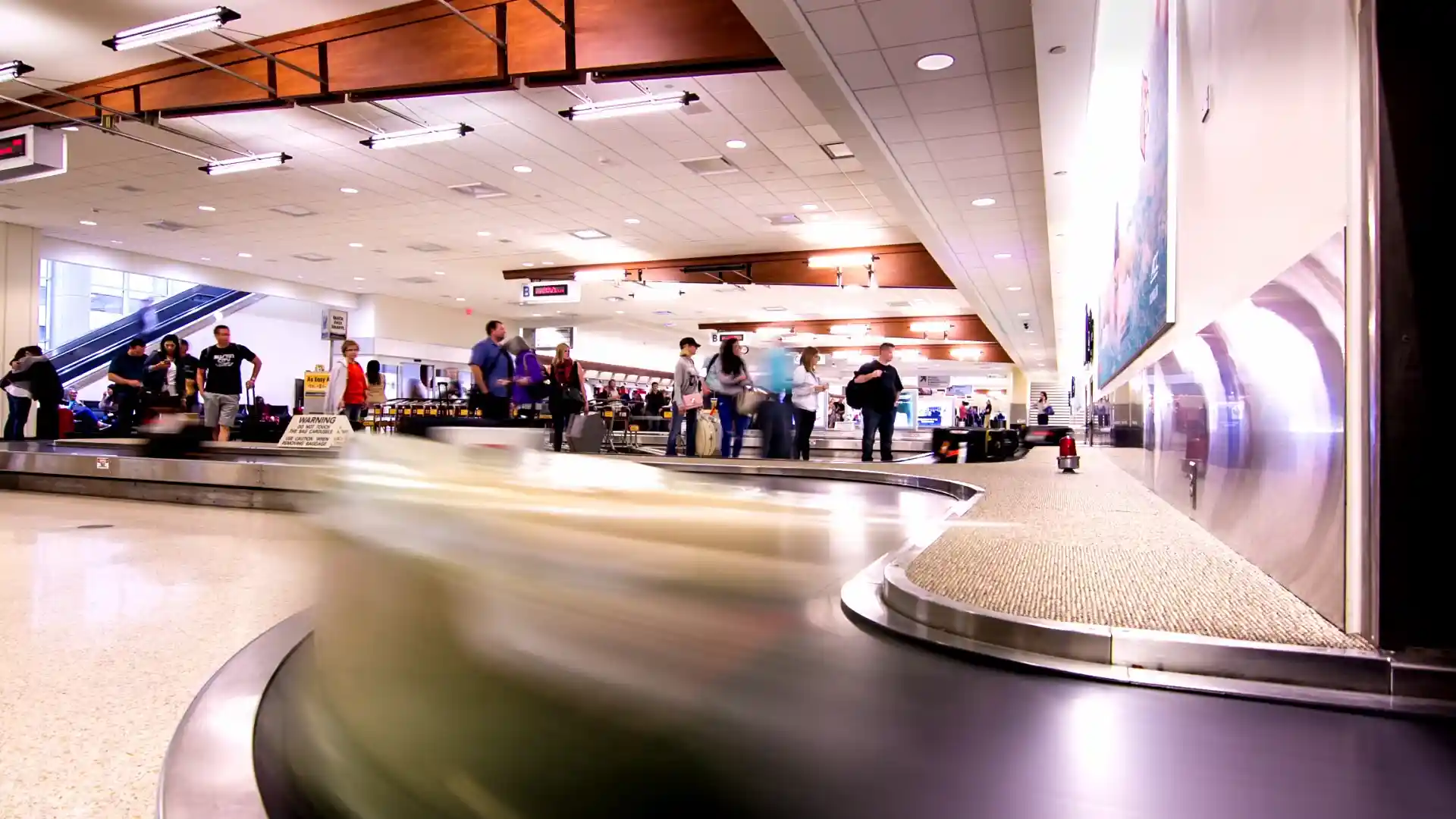
Working In The World Of Broadcast Sports
The following day, I set up my equipment at Churchill Downs and captured test timelapses of the grounds surrounding the racetrack. I processed the images and provided the video files to the broadcast team via a thumb drive. The day after that was Oaks, serving as a test run for the Derby. I arranged for some of the members of the National Guard, who were on-site to direct traffic, to stand by my cameras to prevent anyone from walking off with them. The two guardsmen were a pleasure to work with, and the arrangement worked out great.
Working Oaks provided valuable insights into the nature of national broadcasts. A college professor of mine, who had previously worked for a major sports broadcast network, once described the industry as having “blue-collar work with white-collar pay.” He emphasized that the work was skilled but somewhat physically demanding and had pay comparable to that of doctors or individuals with advanced degrees. The high compensation was attributed to the grueling hours, constant travel, and the pressure to perform flawlessly under live broadcast conditions. He also warned that making more than a few mistakes would result in not being called back for future jobs, as there were no shortage of people eager to break into the industry.
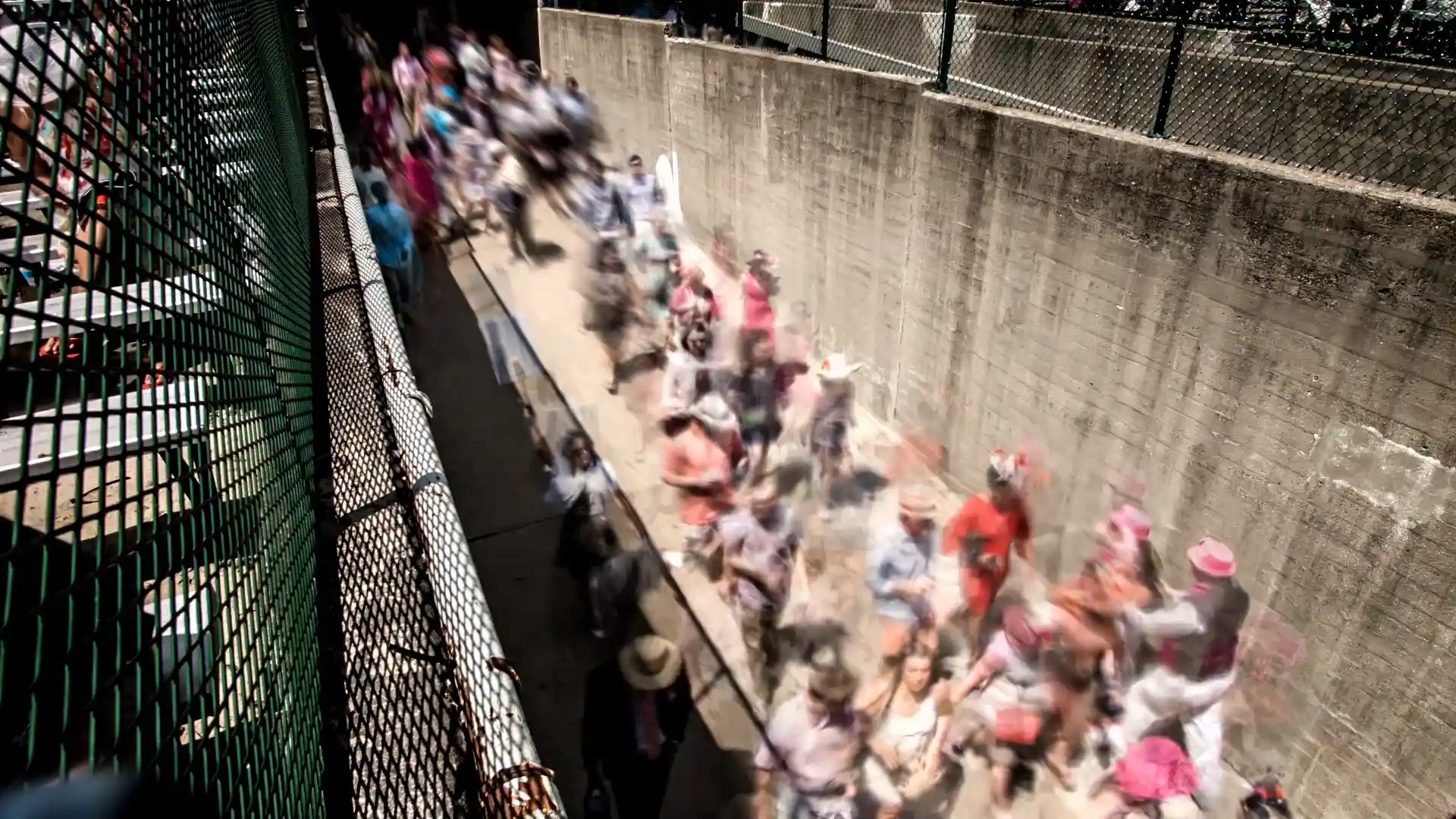
Things Don’t Always Go Perfectly
During the Oaks broadcast, I processed around ten timelapse clips. However, one of the lower-level producers in charge of the truck I was working in noticed a lack of motion blur in the final videos. She expressed her disappointment and questioned why I hadn’t brought this issue up with the regular timelapse creator. I explained that I was using an ultra-wide lens without the option for an ND filter, which would have allowed for a longer shutter speed. There was nothing I could do to rectify the situation at that point, and I realized that attempting to shift the blame wouldn’t fix the problem.
This experience taught me that many people tend to place blame on others, even when they should be taking some responsibility themselves. I had previously shown NBC my work, which didn’t utilize a slow shutter speed for outdoor shots. The producer’s question about why I hadn’t raised the issue of a fast shutter speed earlier baffled me. It was similar to asking someone why they put regular gas in a diesel rental car when they were never informed that the car took diesel. While I acknowledge that some of the blame fell on me for the lack of a slow shutter speed, it seems common for those in producer-level roles to avoid admitting their own mistakes. Regardless, throwing others under the bus is pretty bad for morale.

Overcoming Challenges
After the critique of my clips, I continued processing the day’s images, finishing around 3 am. I headed home to get some rest before returning to the track five hours later. On the day of the Derby, I parked a few miles away at the University of Louisville football stadium and with my backpack full of cameras, took a shuttle bus to the track. The day proceeded similarly to the previous ones, with two to three cameras running continuously and I would process shots as they came in. However, I encountered a significant bottleneck in my workflow: processing a 10-second clip from raw files took between 30 minutes and an hour. Knowing that I had to render everything before the broadcast, I decided to have one of the cameras shoot in JPEG format instead of raw to speed up the process. Although the colors wouldn’t be as vibrant, I prioritized quantity over quality based on the previous day’s experience.

Return On Investment
I managed to process all the images before the Derby began, and to my delight, one of my shots was used during the opening of the broadcast. My colleagues in the truck were thrilled for me, but at the time, I couldn’t help but think, “I spent around 30 hours creating content for a 7-second shot.” However, looking back on this with eight years of hindsight, I realize that those 7 seconds of footage were probably worth the $8,000 price tag I invoiced for.
To put things into perspective, the 2022 Derby broadcast had an estimated audience of almost 15 million viewers, with a 30-second advertisement during the race costing approximately $340,000. Advertisers were paying roughly $10,000 per second for airtime, and I assume that most advertisements cost at least $50,000 to produce on the low end. This means that each second of video was worth around $13,000. With these figures in mind, it likely took just a second or two of advertising airtime to cover the cost of my portion of the production, which filled about 7 seconds of airtime.
Furthermore, if we factor in the 50 hours it took to create those 7 seconds, from pre-production to the end of the shoot, and consider the nearly 15 million viewers that watched the broadcast, that 7-second clip had roughly 29,000 watch hours. When dividing the 29,000 watch hours by the $8000 invoice the cost per hour of watch time, comes out to about $3.62. Although these numbers are rough estimates, I find it fascinating to explore the return on investment, even if it’s not entirely accurate.
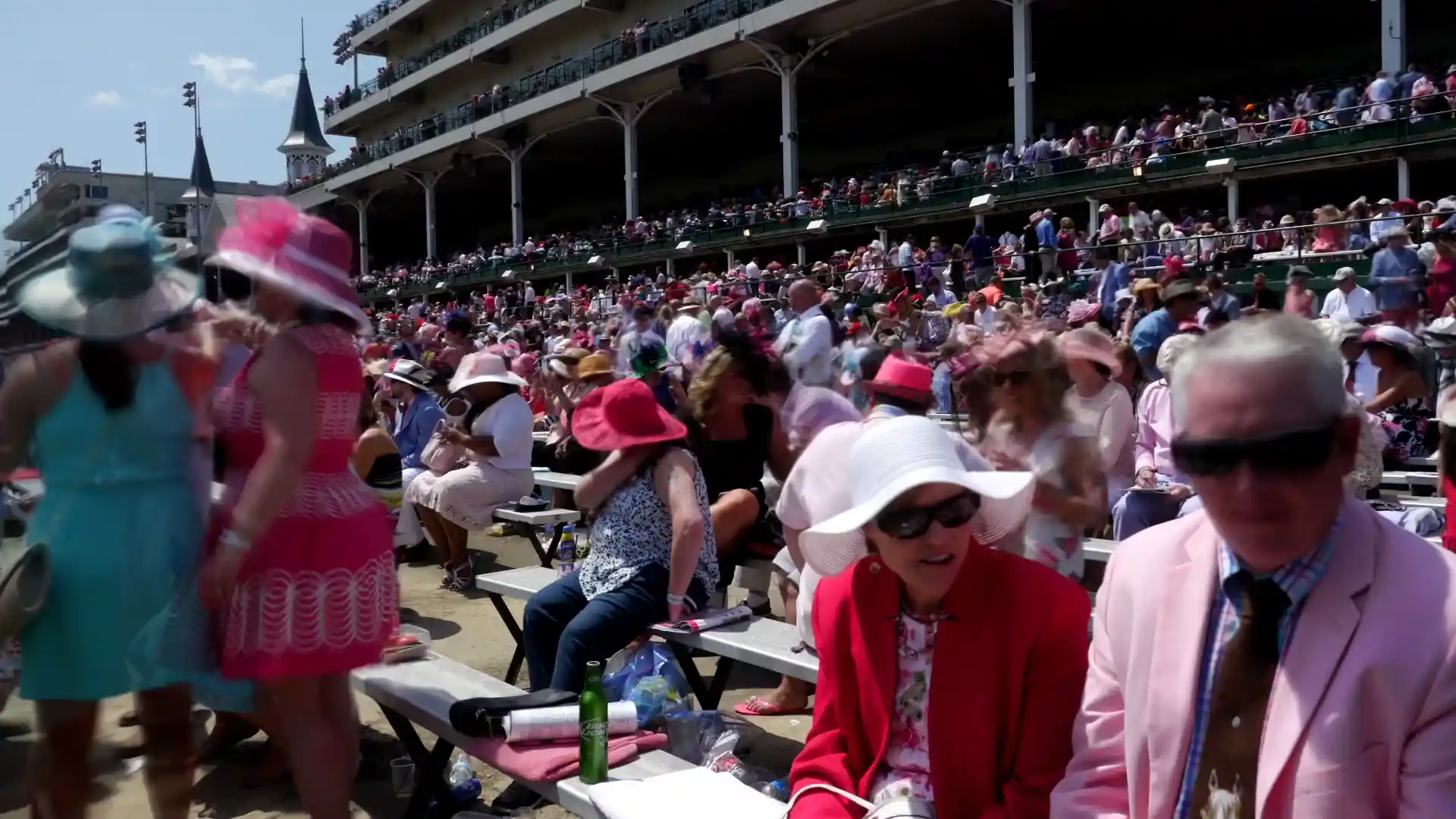
Wrapping Up
In conclusion, I want to highlight the positive aspects of this experience. First and foremost, I had the opportunity to be part of something that few others will ever have the chance to do, which inspired me to create this blog post and share my story with others. Secondly, the money earned from the shoot provided me with financial stability to get by for the next couple of months, even if no other work came in. However, what I enjoyed most about the entire production was the food. To the best of my recollection, NBC provided breakfast, lunch, and dinner, along with water, energy drinks, and soda whenever we wanted. The food was incredible and was served buffet-style in a large tent set up for the broadcast crew.
I’ve heard stories about military personnel on submarines receiving the best food in the navy, as a means of boosting morale in an otherwise challenging job. I believe the same principle applies to the sports broadcast world. With long hours, demanding conditions, and high stress levels, providing excellent food gives crew members something to look forward to and helps maintain morale. Although I can’t recall exactly what was served, eight years later, I still distinctly remember how fantastic our meals were, and I can confidently say that NBC knew how to take care of its workers.
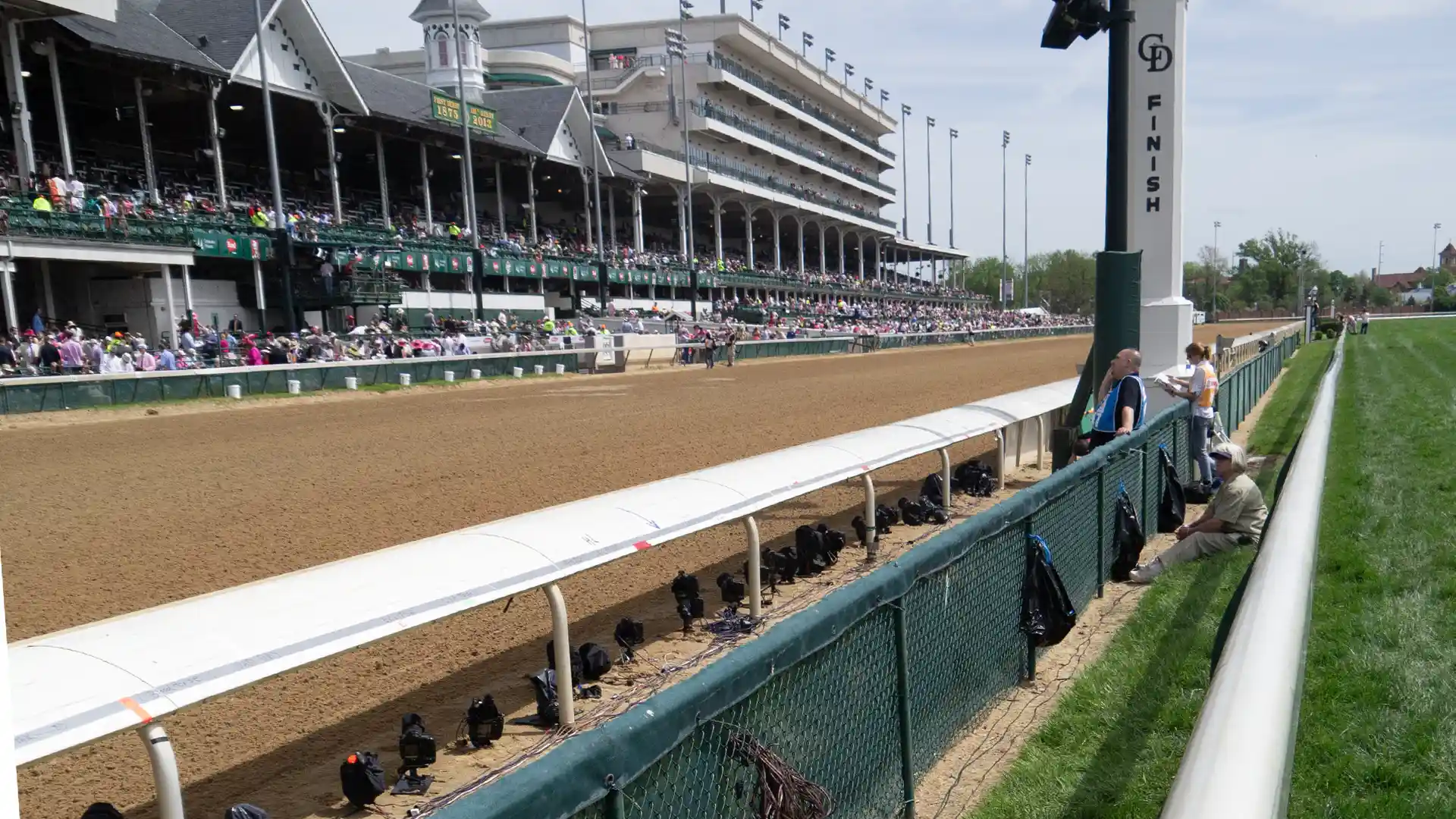
Creating timelapses for NBC sports at the Kentucky Derby. It was about 4 months since I had been on my own and the Kentucky Derby was coming up. I got a surprise call one day about creating some timelapses for NBC sports that would be shown for the broadcast of the Kentucky Derby. I was pretty excited about this opportunity and talked with the guy who normally created the timelapses for the NBC sports broadcasts. He wasn’t going to be able to make this event as he had some conflicting scheduling but he gave me a call to see if I might be a good fit. We talked about some of the technical things like how often a photo would be taken, the completed video frame rate and how long each series of clips should last. Everything seemed pretty straightforward and then he inquired about my pricing and said it was pretty much dead on for what was expected. If you want to see what this role paid back around 2017 you can check out a breakdown of parts of the invoice. After talking with the regular timelapse guy I got the go ahead to work this job, I was pretty excited about the opportunity. Even though I was an expert in creating timelapses I had never done anything quite like this project before. They wanted to have 2 or 3 cameras capturing various locations continuously and then as one camera finished capturing a scene I would grab the memory card, move the camera to a new location, start capturing this new scene and then take the memory card back to the post production truck and start processing the 300 or so raw photos into a 10 second video clip. I asked about how I would process these clips and was told they had some rack mount computer with Avid on them. Processing raw photos is a pretty intensive task for a computer and requires specialized software like LT timelapse, Adobe After Effects, Adobe Lightroom and Adobe premiere…plus a ton of hard drive space. Unless creating timelapses is something you specialize in or is at least a big hobby I would guess there’s less than 10,000 computers in the whole world set up for this type of work and I doubt they had one of those few computers so I explained this to the producer and got the go ahead to rent my computer out for the job. That was one technical part of the equation out of the way but I still needed to figure out the capturing side of the process. Knowing that they needed 3 cameras going most of the time I made sure the two cameras I had would be up to the task then went on Amazon and bought a third used one that could take raw photos at a reduced resolution which would be invaluable in speeding up the rendering process to get the clips out in a timely manner. The new camera showed up a few days later and I built it up, went to take the first photo and got a memory card write error. Not thinking too much of it I put in another memory card and the same thing happened. This wasn’t looking good, there were only three days or so until the event and it looked like I got a faulty camera. I formatted a known good memory card and the same error occurred. The camera was defective. I can’t prove it but I assume the seller knew their camera was bad and tried to sell it to someone in hopes they could get something for it. I ordered another camera and started to return the broken camera. The new camera came in and thankfully worked fine. Strangely enough when I returned the broken camera I had to get in touch with Amazon support since the tracking said the camera was returned but no one ever signed for it and thus I wasn’t getting a refund. Thankfully the Amazon customer service representative refunded the purchase after a few minutes but I thought that was strange. On an unrelated similar story I returned an unopened laptop to Amazon for another rush job years later and something similar happened. The laptop said it was returned but no one signed for it and I had to reach out to their customer service again to get the issue resolved. I can’t say exactly what’s going on but I kind of assume that some third party sellers just hope that the customer won’t check on the return status and never issue a refund. Anyway back to the Kentucky Derby job. The first location I got to record was a couple days before the Derby. The Louisville Kentucky airport isn’t a particularly busy airport, but around Derby, hundreds of private planes from around the US and to a lesser extent the globe fly in so the fancy people can watch the races in person and I assume network with the other elites of the world. I’ve been a pretty big fan of airplanes my whole life and I was given access to meet up with someone at the airport and go out on the tarmac to show all the planes being parked along some of the taxiways. I attached an articulating arm to one of the airport tugs and had the camera fire off thousands of photos of planes being pulled around. I’ve recorded a lot of cool things but this was definitely up there. I got home that night processed the footage and then when looking back on the rendered video noticed the guy driving the tug had on a hat with some sports logo and I could see the tail numbers on the planes which could potentially identify who came into the Derby. I got in touch with the producer for the Derby broadcast and let them know about this and was asked to blur out the logos and tail numbers. This was the beginning of what had initially seemed like was going to be a fairly straightforward shoot start turning into something that was going to be more effort than I had anticipated. I spend the next few hours animating masks in After Effects and blurring out any identify marks. It wasn’t fun but I got the job done. The next day I drove out to Churchill Downs and set up my desktop computer, monitor and charging stations for my cameras. Then shot a few test timelapses of various establishing shots of the grounds around the racetrack. I processed the images into video files and put them on a thumbdrive so they could be used during the broadcast. I think the next day was Oaks, this was kind of a test run leading up to the Derby. When I initially was figuring out logistics for the job I asked how I was going to secure the cameras that were taking photos so the general public didn’t walk away with them. After a while someone arranged for a couple members of the national guard who were on site to direct traffic and make sure things didn’t get out of hand would stand by the cameras so no one messed with them. This actually worked out really well and the two guys from the national guard were great to work with. However recording this day gave me some insights into what working these national broadcasts was actually like. Back in college I had a professor that used to work for one of the major sports broadcast networks and he said something along the lines of “The work in the industry is similar to blue collar jobs but pays like white collar jobs.” Basically you’re doing skilled work that’s more on the physical side but you’ll make money similar to what doctors or people with advanced degrees make. Also it was implied the jobs pay well because the hours are pretty bad and you’re always on the road and you’re probably going to get yelled at a good amount because the jobs are stressful and the producer or director is doing everything live and you can’t fix mistakes later. You basically have to be perfect. The professor also said something along the lines of if you mess up more than a few times you won’t be called back to work any more jobs and you’ll be replaced without any problem as there’s no shortage of people looking to get into this line of work. I found this to be pretty true for most everything except for the director yelling at people, although I’ve heard horror stories about this and here’s a link to a famous example. Personally I think this is a terrible way to manage people as this is pretty demoralizing and when you’re afraid of messing up you can’t take any risk to innovate. Back to the job at hand which was creating timelapses for the Oaks. I had processed ten or so timelapse clips and one of the lower level producers that was in charge of the truck I was in was looking over some of my work and saw that there wasn’t a lot of motion blur in the final video. She wasn’t very happy with this and asked why this was. I explained that I was using an ultra wide lens and there wasn’t an option to put an ND filter(basically sunglasses) in front of it which would have let the camera’s shutter stay open longer. She then disappointedly asked why I never brought this issue up with the guy who usually does the timelapses. There wasn’t anything I could do about it at this point so there was no point in trying to put the blame on someone else like she was trying to do with me. What I took away from this experience was that a lot of people will put the blame on others even if they should ultimately be the ones taking responsibility. I had shown them my work beforehand and I didn’t use a slow shutter speed for any of the outdoor shots in previous timelapse videos but what most shocked me was when she asked me why I didn’t bring up this issue beforehand. The question made no sense to me as it’s really hard to ask a question about something you had no idea would be an issue. It’s kind of like asking why someone would put regular gas in a diesel car they were renting. If the person that put gas in the diesel fuel tank had no idea that the car used a different type of fuel and wasn’t told about this there’s no way they would know they weren’t doing anything wrong. Personally, I’ve done this before. Honestly, I should have known better, but for some reason, I wasn’t thinking, and surprisingly, you can put a gasoline nozzle in a diesel fuel tank, but you can’t put a diesel nozzle in a gas tank because the diesel spot is larger than a gasoline fill tube. In short, yes some of the blame should have been placed on myself for the lack of a slow shutter speed but it seems to be pretty common that people who are in producer level roles won’t acknowledge they’ve made a mistake….maybe that’s how they got to those roles in the first place….either way throwing other people under the bus is a terrible practice. Well, after the dressing down on how my clips looked, I carried on processing the images from that day, and by around 3am, all the clips were processed, and I was able to go home so I’d be ready to be back at the track in 5 hours. The day of the event was pretty interesting. I parked a few miles away at the UofL football stadium and took a shuttle bus along with my backpack full of cameras to the track. The day largely proceeded the same as before. I had two to three cameras going all the time, and I would process shots as soon as they would come in. There was a pretty big bottleneck in my workflow. Processing a 10 second clip made up of raw files took between 30 minutes and an hour and knowing I had to get everything rendered out before the broadcast I ended up having one of the cameras shoot in jpeg instead of using raw photos. The photos wouldn’t look as nice as the colors couldn’t be pushed as far, but based on what I was capturing the previous day, this job was about quantity over quality, and I figured it was better to get more clips to choose from rather than my regular workflow where I used motorized sliders and spent a few hours in post creating one clip. I got all the images processed before the Derby kicked off and towards the opening of the broadcast one of my shots was used. The other guys in the truck I was in were all super happy for me that one of my shots was used. Looking back I’m glad that at least something was used but at the time I was thinking “Man I spent around 30 hours creating content to have a 7 second shot shown.” Taking a step back and looking at this from a perspective 8 years or so later it kind of makes more sense since those 7 seconds worth of video were worth the $8000 price tag to create. The 2022 Derby broadcast had an estimated audience of almost 15 million viewers and a 30 second advertisement during the race cost an estimated $340,000 so advertisers are roughly paying $10,000 per second to buy airtime for the Kentucky Derby and I assume most of the advertisements cost at least $50,000 to make on the low end so in reality each second worth of video is worth around $13,000. With those numbers in mind it probably took a second or two worth of advertising airtime to pay for my portion of the production which filled around 5 seconds worth of airtime. Also from a perspective of how much time went into creating those 7 seconds worth of content compared to the collective hours spent watching the clip there was a pretty good return on the ratio. If it took around 50 hours to create those 7 seconds if everything from pre-production up until the shoot was completely over and I was back home was factored in, and if the nearly 15 million people watching the Derby were accounted for, then that 7-second clip had roughly 29,000 watch hours. If we were to figure out how much that clip cost per hour of watch time then it comes out to about $3.62 or about half the cost of minimum wage at the time of creation. These numbers are incredibly rough but I think it’s always interesting to try and figure out a return on investment even if it’s widely off. In wrapping up I like to end with a positive take away so what can I say I enjoyed about this. Well first I was able to get an experience that so few others will ever have an opportunity to have which let me create this blog entry that hopefully provides some value to anyone reading. Second, the money earned from the shoot provided enough money to get me by for the next couple of months even if no other work came in. But what I enjoyed the most about the entire production was the food. To the best of my memory we were provided breakfast, lunch and dinner along with water, energy drinks or soda anytime we wanted. The food was amazing. There was a large tent setup for the broadcast crew and there were a couple long tables setup buffet style where you could grab whatever you want. I’ve heard stories that military personnel who work on submarines get the best food in the navy since the job is pretty awful otherwise, and food is a great morale booster. I figure the same concept holds true for the sports broadcast world. You’re stuck on site and the hours and conditions aren’t great along with being pretty stressful. If you’ve been provided good food it’ll give people something to look forward to and help boost morale. I don’t exactly remember what was served but 8 years later I still remember how great our meals were where I’d say that NBC knew what they were doing when it came to feeding its workers.